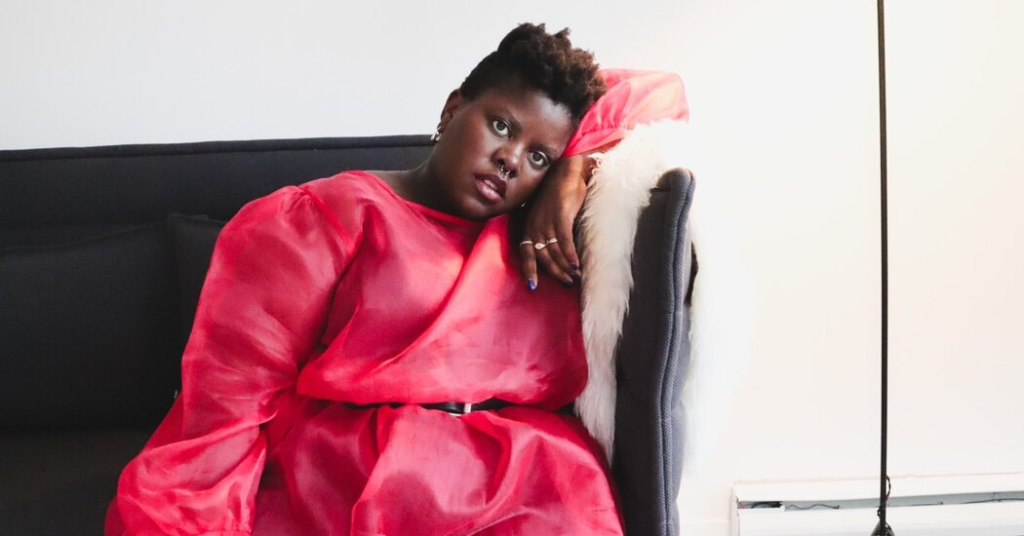The Moral Quandary of ‘Slow Fashion’ Influencers
5 min read
On a small, cozy corner of the internet, mornings are spent curled up in an armchair while leisurely sipping cafe au lait from a wonky ceramic mug. Clothing is loosefitting, adheres to an earthy color palette and is often paired with chunky handmade clogs. Natural fabrics abound, and an abundance of indoor greenery always seems to be flourishing nearby.
Welcome to the world of “slow fashion” influencers, where people — primarily women — gather to share outfits and extol the virtues of thrifting, mending and buying well-made garments instead of fast fashion pieces.
These creators have built followings for their conscious consumerism, the placid tableaus they post on Instagram and their preternatural ability to look good in clothes. But beneath the surface of all the lifestyle photography lies a more complicated reality.
Slow fashion is a practice, a set of values that asks adherents to prolong the life span of their existing garments and, if they must shop, to buy secondhand. But increasingly the term has been adopted by brands that do little more than produce clothing in smaller quantities than, say, the Gap.
The clothes these companies sell (and which influencers promote) may be made in small batches by workers who are paid fair wages, but it’s all still new stuff, created using resources extracted from a finite planet. When it comes to slow fashion, the communist refrain that there’s “no ethical consumption under capitalism” is less rhetoric than it is a genuine predicament.
“Just the term ‘sustainable fashion influencer’ can sound quite oxymoronic,” said Aditi Mayer, a 24-year-old content creator, photojournalist and labor rights activist from Los Angeles.
While these influencers may showcase brands that seek to mitigate environmental impact, their content still drives a desire to consume. Spend long enough surfing related hashtags and you could walk away with an itch to drop $400 — a price that may reflect fair labor wages — on an oversize sweater from a brand you’ve never heard of.
The irony of the messaging within this social media niche is hardly lost on the influencers. Beth Rogers, 27, described the crux of sustainable fashion influencing as “the desire to divest from capitalism and overconsumption while at the same time having to participate in it.” And the best way to deal with that tension, she said by phone from Chicago, is to “hold space for it and not try to back away or ignore it.”
Ms. Mayer views herself as a “Trojan horse” in the fashion industry and will sometimes use conversations with brands as a way to learn more about their business practices. “I’m in a really interesting spot,” she said, “because the everyday consumer doesn’t necessarily have access to the internal suite of a major corporation.” The brands, she noted, don’t always take kindly to her questions.
“I think there’s a lot of room for the average consumer to learn how to purchase things better,” said Marielle TerHart, a plus-size creator from Edmonton, Alberta, who goes by Marielle Elizabeth online. By encouraging people to care for their garments and showcasing brands that carry an inclusive range of sizes, Ms. TerHart, 32, helps her followers develop more conscious relationships with clothing.
Lyndsey DeMarco, 28, a content creator from Portland, Ore., keeps track of her purchases using budgeting software; in 2021, she bought 15 clothing items (a mix of new and secondhand) and received an additional 15 pieces from brands. She estimated that she accepts about 5 percent of the free clothing she is offered on a regular basis. Ms. Rogers said she usually buys 15 to 20 items per year.
Many influencers pick their partnerships based on strict criteria. For Ms. TerHart, that means supporting companies that compensate workers well.
“My priority is that everyone who works on the garment is paid a fair and livable wage,” she said, “but I do have a bit more leniency for designers who are marginalized in some way because I know that their funding opportunities are very different.”
Ms. Mayer focuses on brands with high labor standards, but will sometimes agree to partnerships with bigger brands under the Faustian bargain that the financial freedom will allow her to work for less promoting other brands with better ethics but a smaller budget.
“I really try to present garments as options, not as must-haves,” said Lydia Okello, 32, a plus-size content creator from Vancouver, British Columbia. Mx. Okello is conscientious about the language used in posts about these clothes, as a strategy for balancing the incongruity of accepting paid ads to promote products while trying not to encourage consumption.
“I don’t think that just because you’ve seen it on me or somebody you like, you should buy it, even though that is literally my job,” Mx. Okello said.
Influencers occupy an awkward space in the marketplace as an intermediary between the consumer and the brand, said Gabbie Nirenburg, a self-described “un-fluencer” in Philadelphia. Ultimately, she sees her role as a practical one: Seeing clothing on different bodies can be incredibly helpful when one is deciding whether to spend $200 on a pair of ethically made jeans. (Ms. Nirenburg, 38, who works full-time for a health insurance company, is the creator of the Style Blogger Index, a gigantic spreadsheet where shoppers can find bloggers with measurements similar to their own.)
Sustainable fashion influencers are educators, not just advertisements, said Aja Barber, the author of “Consumed: The Need for Collective Change: Colonialism, Climate Change, and Consumerism.” Their primary purpose is to provide outfit inspiration and demonstrate how to wear garments multiple times. They might create a desire for new items, but it isn’t located within the context of a disposable trend cycle.
“It isn’t: ‘OK, now onto the next,’” Ms. Barber said. “It’s: ‘I have these pieces and I’m going to be wearing them a good long time.’”
However, not all experts agree. “I think when an influencer aligns themselves with a brand, the commerciality of it taints the message,” said Elaine Ritch, a senior lecturer in marketing at Glasgow Caledonian University.
Perhaps the reason a lot of slow fashion content comes off as disingenuous is because of the platform on which it is delivered. Social media, once a place of genuine connection, now exists primarily to sell both products and personalities. Even the most sincere posts about social causes can seem misplaced online. In other words, it’s not the message that’s the problem, it’s the medium.
That doesn’t mean the message is meaningless. According to Ms. Mayer, much of her work is about reimagining what the future can look like — a world where fashion doesn’t require the qualifier of “sustainable” because it already values labor and the environment — but that doesn’t mean it’s easy.
“It’s incredibly difficult to work in the fashion industry while advocating for, in some ways, the fashion industry to end,” Ms. TerHart said.





